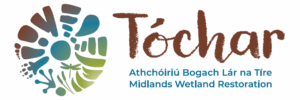Text and photography by Helen Shaw, Athena Media
How can we imagine our future if we have not already shared our history, our past, our stories of who we are and where we come from? In storytelling, our back story, where we begin, our origin and roots, is what shapes our journey. Knowing our past, collecting and conserving our stories of heritage, culture, history and community, is an essential part of our sense of place and belonging but it is also the basis for our exploration and imagining of what lies ahead – our shared future. It’s at the heart of resilience for us as people and places.
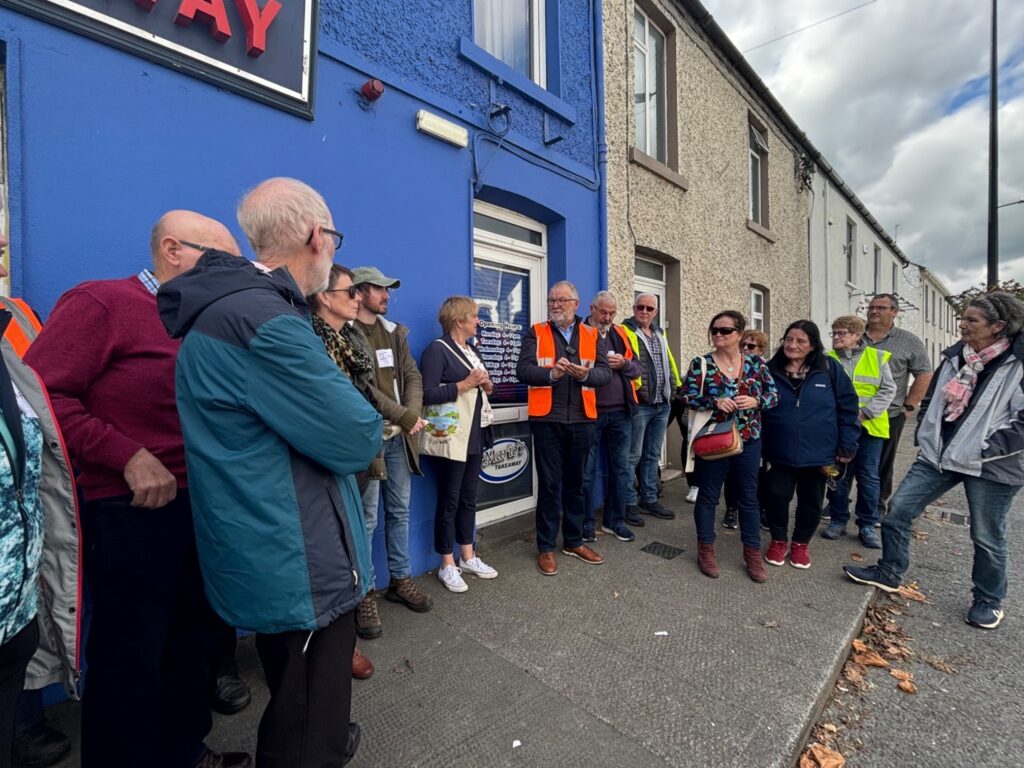
The poet T.S.Eliot in his masterpiece Four Quartets wrote
“Time present and time past
Are both perhaps present in time future,
And time future contained in time past”.
That idea that the story we tell ourselves of our past and of our present shapes our future, in the way that we know the land we leave to the next generation is continually formed by how we’ve used it in the past and in the present. This helped frame our co-hosted community storytelling event ‘Sharing our Past, Imagining our Future”, in Kilcormac, Co Offaly on September 25th. We have been meeting with the Kilcormac community since January and this event, hosted with Linda Kelly of the Kilcormac Development Association, invited people in the area to come together and explore that idea of what stories we carry from our past, what we value from our history, how we describe our present and what may be missing, and how we then begin to imagine a flourishing future for all.
On the day we enjoyed a social gathering as well as a facilitated workshop and heard the remarkable story of artist Tina Claffey, who comes from Birr – just up the road – and got to experience her wonderful macro photography. Tina’s work draws our eye to the detail of what is hidden beneath on the bog from the tiny sundew to the bog asphodel.
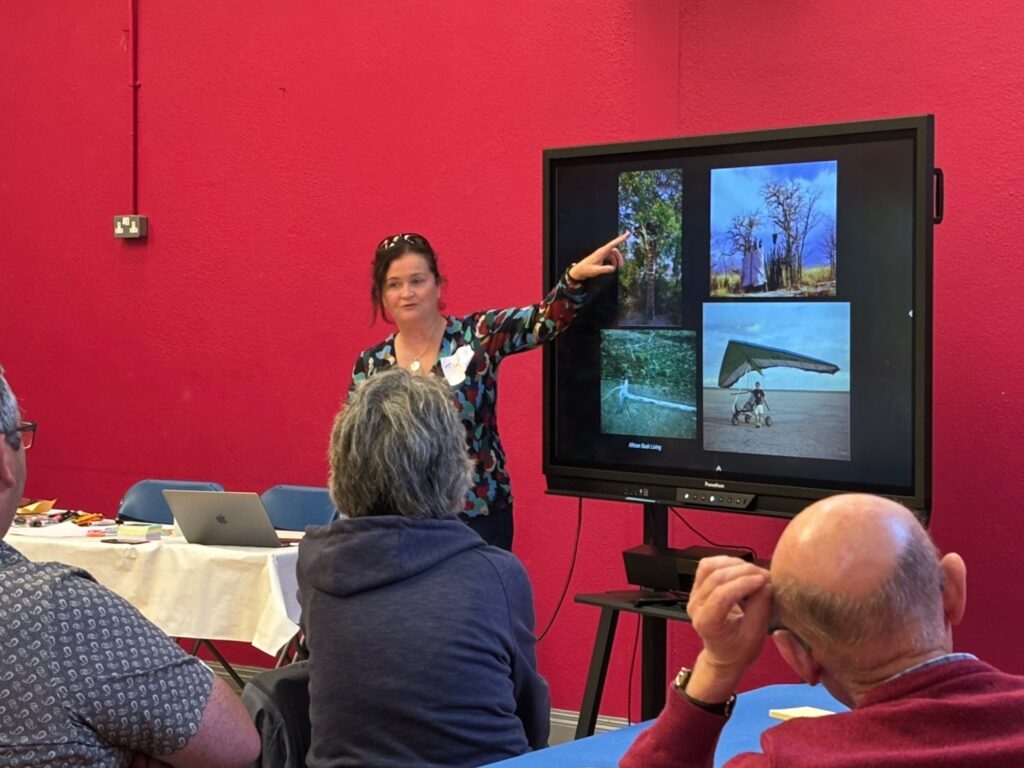
After lunch in the Kilcormac Community Centre, local volunteers guided us on a walking heritage tour of the town where we experienced the stories of the buildings – from the old mill at the entrance to the town – to the newly restored Fiesta Hall; once the ballroom of romance for the area and now a green hub for enterprise, culture and community.
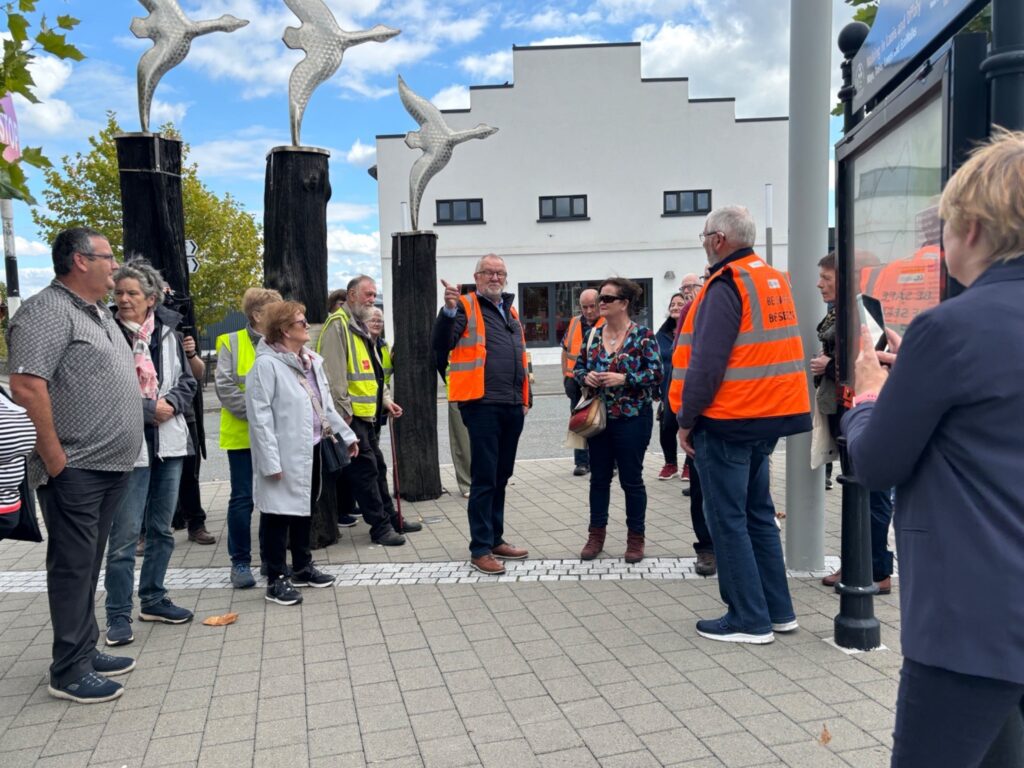
As part of the preparation for the day our videographer Stephen Crilly spent time filming around Kilcormac and captured some breath-taking drone footage of the town and the lands surround it including the Lough Boora Discovery Park – the nature parkland developed by Bord na Móna from cutaway peatlands.
Watch: Sharing our Past, Imagining our Future – a bird’s eye view of Kilcormac
As you enter Kilcormac you see new branded signage saying “Kilcormac – Gateway to Lough Boora” The parkland is indeed just a few kilometres up the road, but the lands of Lough Boora hold stories of past, present and future for people living around it. Kilcormac, with a population today of about 1,000, became a dynamic and thriving Bord na Móna town from the late 1940s. Many of the businesses in the town grew up as the needs of Kilcormac expanded and more and more people went to work for Bord na Móna. At its height, Lough Boora was supplying over a million tonnes of turf a year; many in Kilcormac worked there for Bord na Móna, some still do.
Sean Craven, Seamus Barron and Cormac Nolan, volunteers with the local Kilcormac community, all worked in Bord na Móna and feel an immense sense of pride in that story and want to see it carried into a shared future. A place where today’s changed use of the boglands, from extraction to regeneration and renewal, can sit side by side with the way in which their work, and that of so many others, helped fuel Ireland and enable the country to become the thriving place it is now. Sean would love to see what remains of the old industrial machinery kept and included in the discovery park along with the oral histories of the people who worked there from the 1940s, often three generations of families.
Listen : Sean Craven’s story on the Kilcormac oral history project and visit the full collection of first person stories recorded by the late Maurice O’Keefe here.
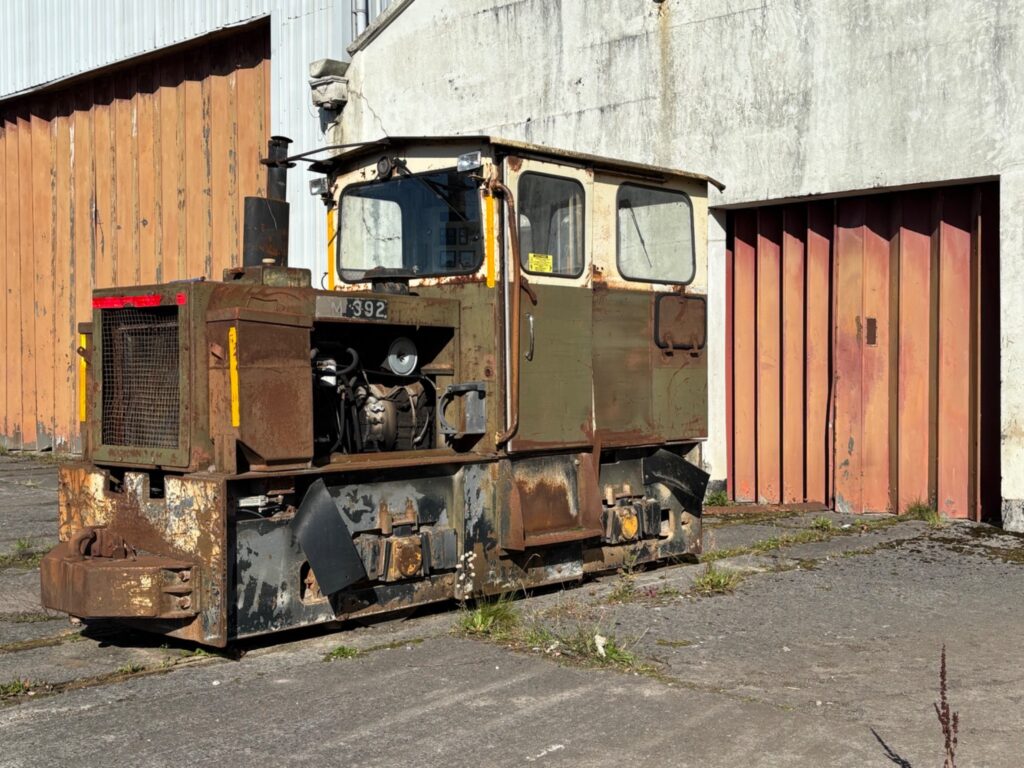
workers want to preserve the stories, memories and lives of workers and communities that thrived from the late 1940 until the cessation of peat and the shift to decommission the cut bogs and move to bog rehabilitation and in some cases renewable energy. While welcoming the changed commercial and industrial use of the boglands, the need to preserve nature and return the land to carbon storage, many communities, villages and towns who helped build the industry for decades want to see
their past included in the shaping of a transformed future
The Tóchar Stories project has begun to capture these stories of the place and to facilitate that shared conversation about a reimagining of the future. People like Linda Kelly at Kilcormac Development Association are at the heart of community spirit in the town. For her, and others trying to envision a thriving future for the young people coming up, improved access from Kilcormac to Lough Boora is critical. “We want a safer access road” Linda says – one that opens up easy access to the parkland for locals and visitors by car, bike and walking. While Kilcormac is ‘the gateway to Lough Boora’, the road network to Boora is not suitable for cyclists or walkers and is really best suitable for single car traffic. If Kilcormac is to benefit from tourism and the new greenway on the canal then simple things like traffic, transport and roads become part of a just transition.
Anne Coffey mentions the road when we talk about the future. She’s run the draper shop on the main street all her working life. She closed up shop to take part in the workshop. Her shop is one of the remaining retail stores that point to the legacy of the past. Her father opened the business in 1947 as the town was beginning to boom with Bord na Móna and Anne is still operating it, and at the centre of community life, in her seventies. She loves to walk in Lough Boora, enjoys everything that nature brings, but worries about the economic future and what the main street will be like in the future. “We need that road” she says “if we’re to benefit from what’s happening”.
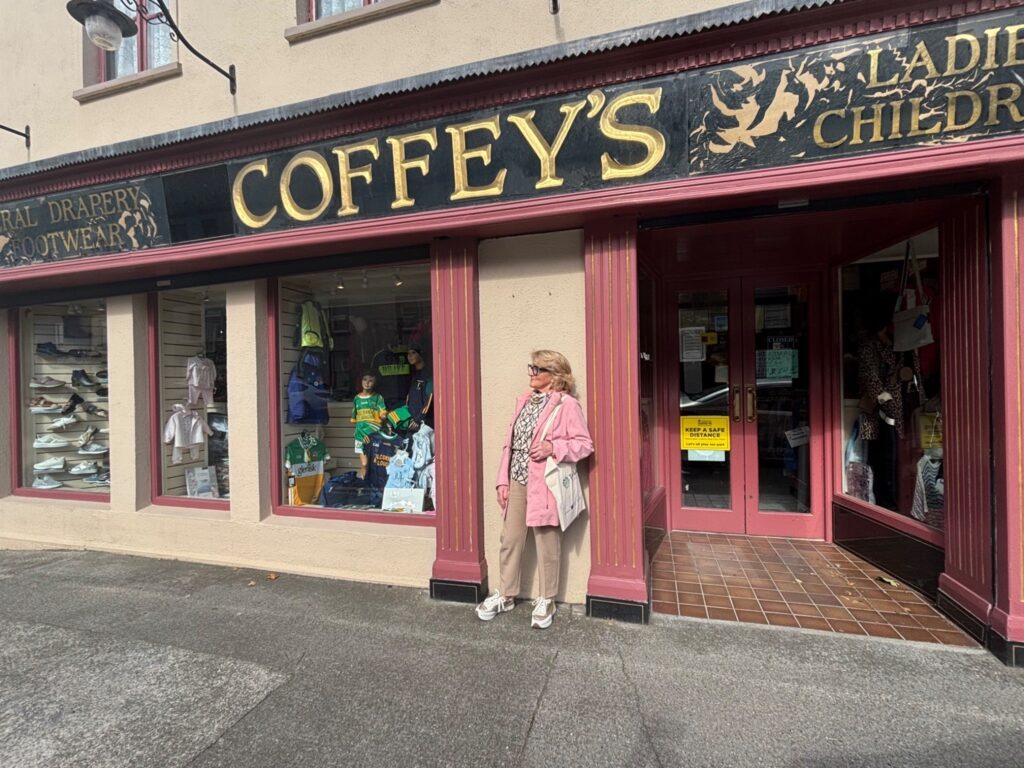
People envision cycling businesses, coffee shops, places to stay and visit not just the parkland but also the heritage of the place – including the famous Pieta in the local Church. When we talk they also think of new businesses – perhaps returning to some of the old lessons of the past when Kilcormac was a hub of milling and sugar beet. “Are there new crops, new agri-businesses?” asks Sean, prompting a discussion on hemp, flax and what is often called, biomaterials. It is in that space of imagining new beginnings out of endings that we will continue to explore conversations across Kilcormac and hopefully across the generations.
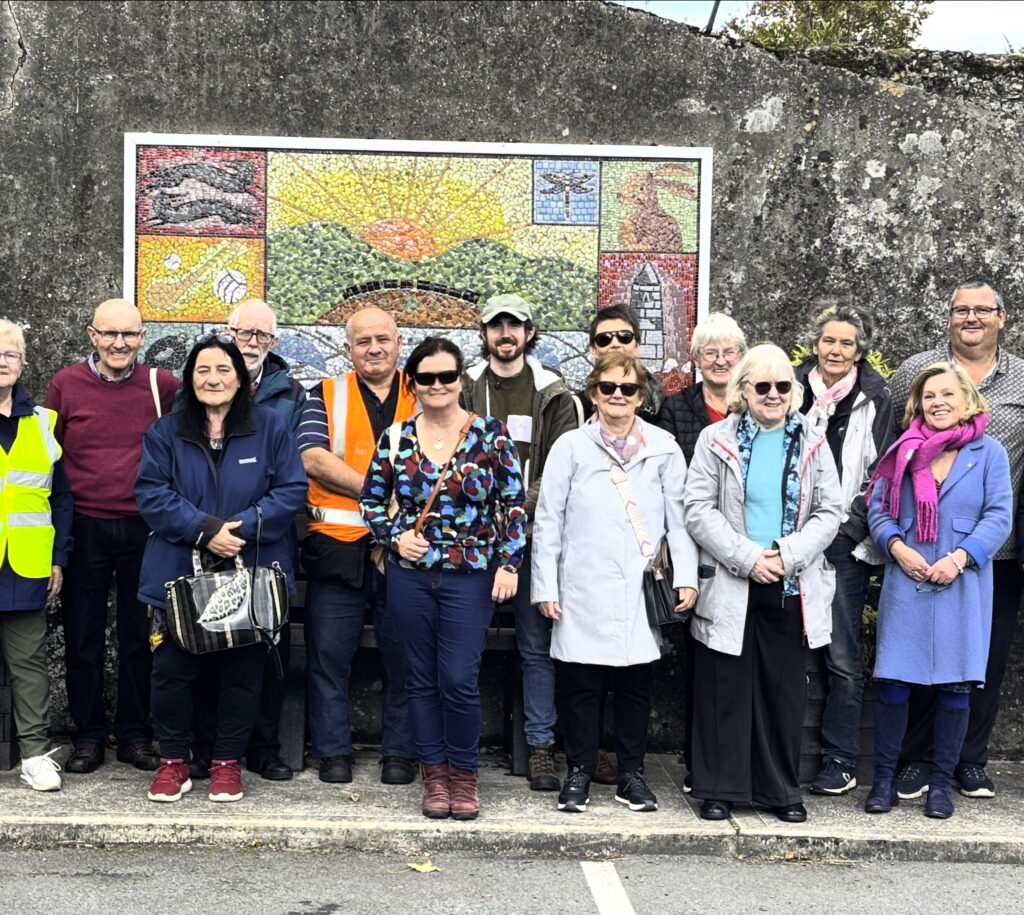
If you want to find out more about Kilcormac visit the not for profit at the heart of the community and find out about its 40 year history https://kilcormacda.ie.
